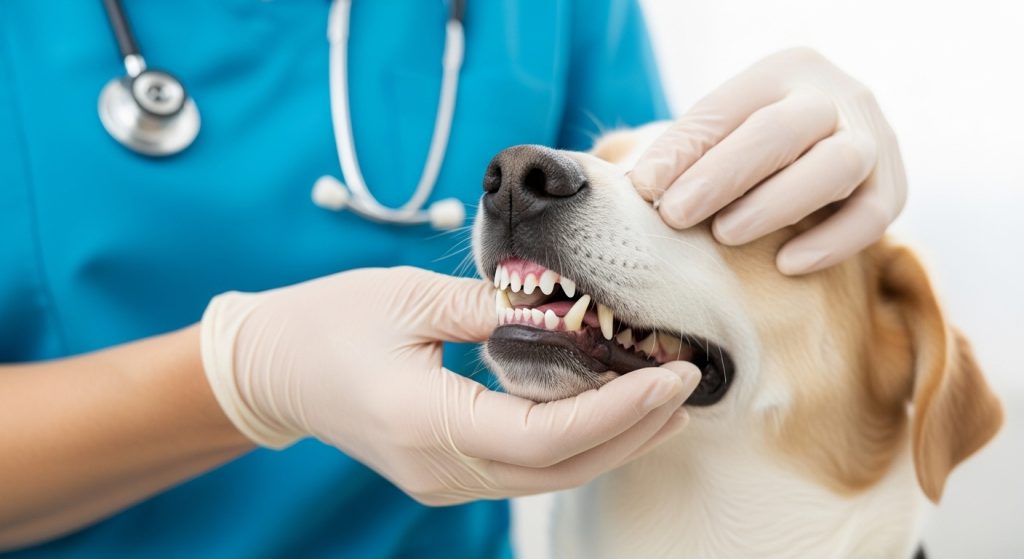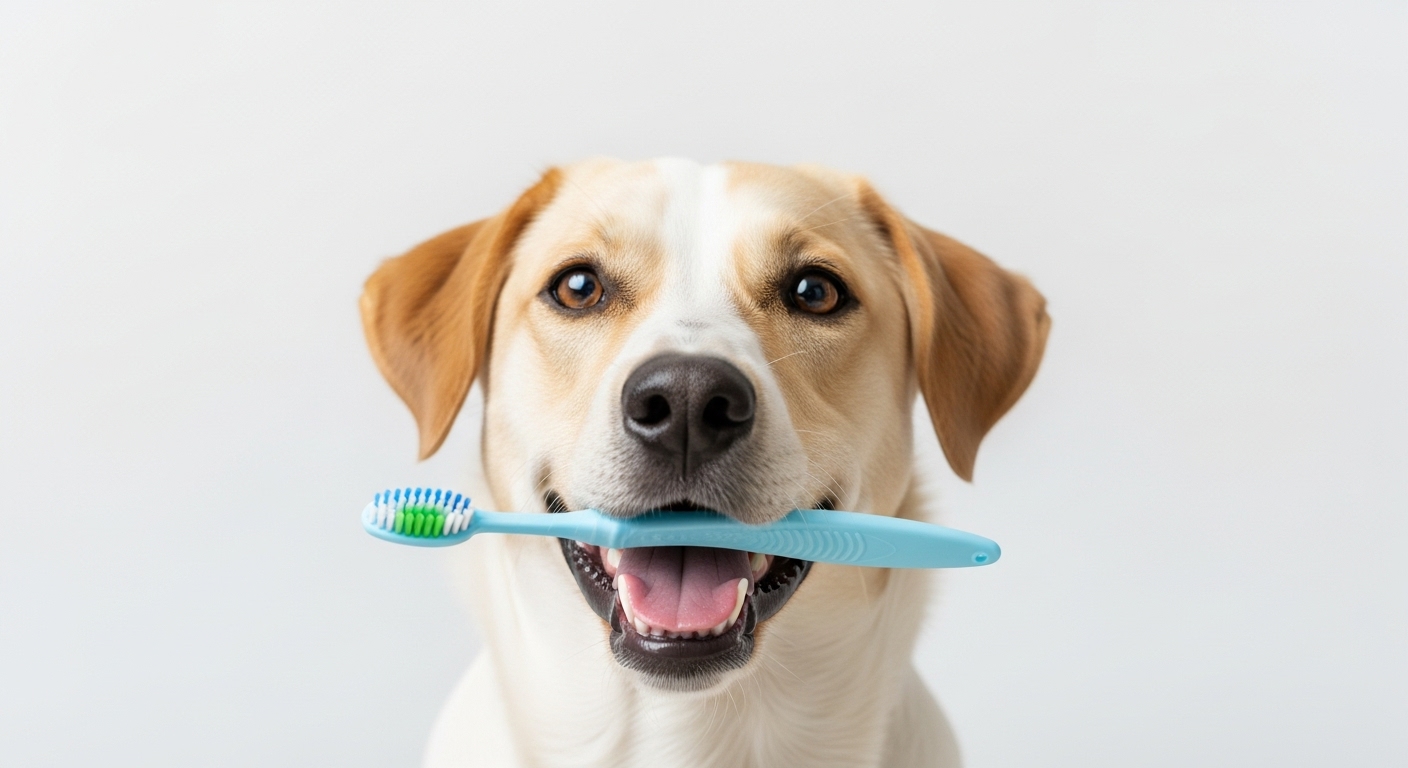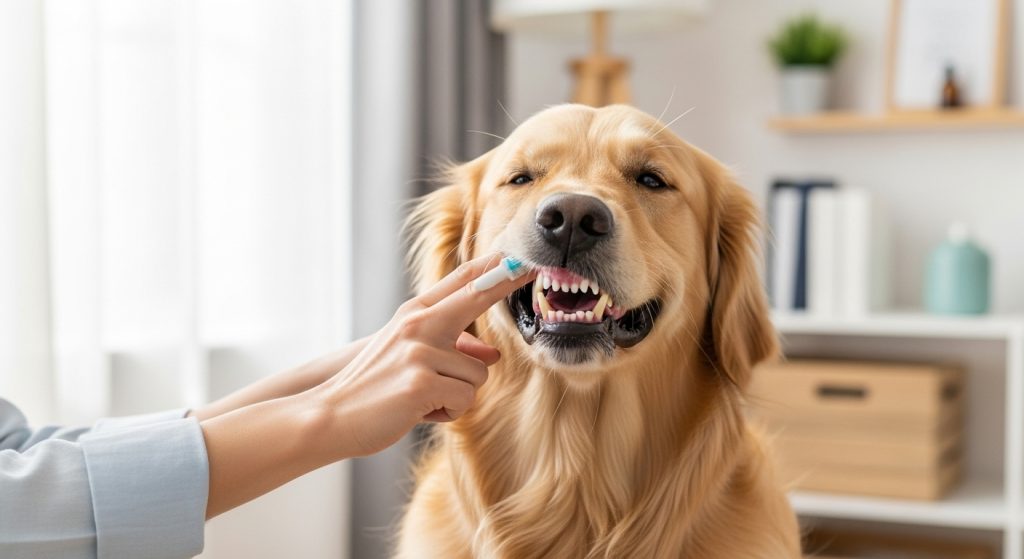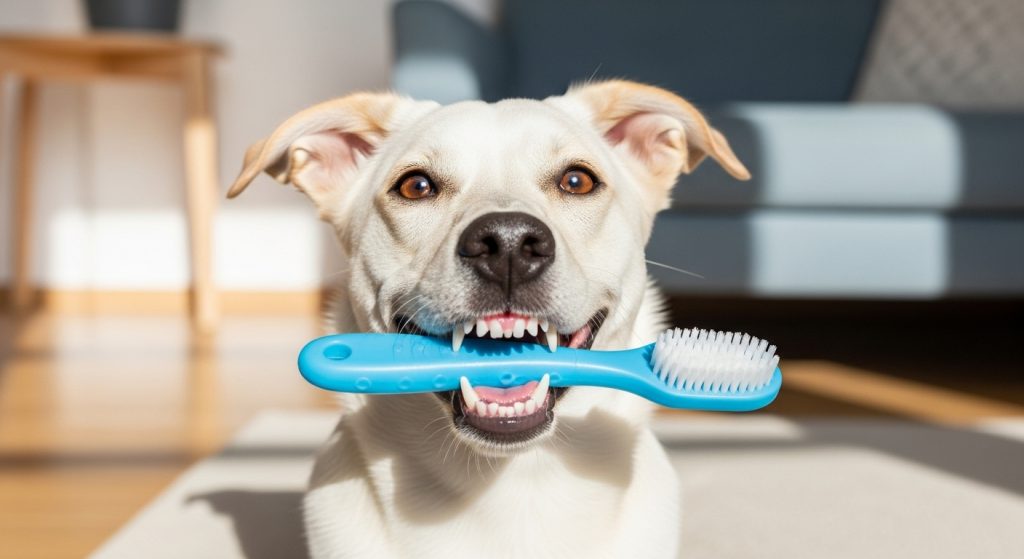Brushing your dog’s teeth might not sound like the most exciting task, but it’s one of the most important things you can do for their health. Dental hygiene isn’t just about fresh breath — it’s about preventing gum disease, tooth decay, and painful infections that can affect your dog’s overall well-being.
According to the American Veterinary Dental Society, more than 80% of dogs show signs of oral disease by age three. The good news? You can easily prevent most dental problems at home by learning how to brush your dog’s teeth the right way.
This guide will walk you through everything you need to know — from understanding dental health to building a daily brushing routine that your dog actually enjoys.
Why Brushing Your Dog’s Teeth Matters
The Importance of Canine Dental Health
Just like humans, dogs can develop plaque, tartar, and gum disease when their teeth aren’t cleaned regularly. Over time, bacteria build up and lead to inflammation, pain, and even systemic infections affecting the heart, liver, and kidneys.
Common Signs of Dental Issues in Dogs:
-
Persistent bad breath
-
Yellow or brown buildup on teeth
-
Red or swollen gums
-
Drooling or pawing at the mouth
-
Difficulty eating or chewing
Ignoring dental care can shorten your dog’s lifespan — but a simple brushing routine can make a huge difference.
Benefits of Regular Brushing
-
Fresher Breath: Removes odor-causing bacteria.
-
Healthier Teeth and Gums: Reduces plaque buildup.
-
Longer Lifespan: Good oral health is linked to overall well-being.
-
Saves on Vet Bills: Prevents expensive dental cleanings or tooth extractions.
The Science Behind Dog Breath
A dog’s bad breath isn’t normal — it’s usually caused by bacterial overgrowth. By brushing your dog’s teeth regularly, you break the biofilm where bacteria thrive, leading to fresher breath and cleaner teeth.

Step-by-Step Guide to Brushing Your Dog’s Teeth
Brushing your dog’s teeth doesn’t have to be stressful. With the right tools, patience, and positive reinforcement, it can become an enjoyable bonding activity.
Step 1: Gather the Right Tools
To get started, you’ll need:
-
Dog toothbrush: A finger brush or angled brush designed for dogs.
-
Dog toothpaste: Enzymatic toothpaste (never use human toothpaste — it contains fluoride, which is toxic to dogs).
-
Treats: To reward good behavior and create a positive association.
Step 2: Get Your Dog Comfortable
Start slow. Before introducing a toothbrush, let your dog sniff and lick the toothpaste. Gently lift their lips to touch their gums and teeth with your finger. Do this for a few days so they get used to the sensation.
Step 3: Start Brushing
-
Apply a small amount of dog toothpaste to the brush.
-
Gently lift your dog’s lip to expose the teeth.
-
Brush in small circular motions, focusing on the outer surfaces (where plaque builds up most).
-
Spend about 30 seconds per side and praise your dog throughout.
Pro Tip: You don’t need to rinse afterward — dog toothpaste is designed to be safe when swallowed.
Step 4: Make It a Routine
-
Brush 2–3 times per week, ideally daily for best results.
-
Always end with a treat or playtime to reinforce the habit positively.
Step 5: When to See a Vet
If you notice persistent bad breath, bleeding gums, or loose teeth, schedule a vet visit immediately. Professional dental cleaning may be needed once or twice a year.
Keeping Your Dog’s Breath Fresh Beyond Brushing
Brushing is the foundation of oral hygiene, but a few extra habits can help maintain fresh breath and clean teeth between brushings.
Dental Chews and Toys
Dental chews help reduce plaque and tartar by encouraging chewing motion. Choose vet-approved dental treats or rubber toys with textured surfaces to help clean teeth naturally.
Popular options include:
-
Greenies Dental Treats
-
Nylabone Dental Chews
-
Kong Classic stuffed with healthy paste
Healthy Diet for Oral Health
Your dog’s diet affects their dental hygiene.
-
Avoid sugary treats or table scraps.
-
Add dry kibble or dental-specific food that helps scrape plaque.
-
Provide fresh water daily to wash away food particles.
Natural Remedies for Fresh Breath
-
Add parsley or mint leaves (in moderation) to your dog’s meal for natural freshness.
-
Try coconut oil — it has antibacterial properties and supports oral health.
-
Use dog-safe dental sprays as a supplement between brushing sessions.
Building a Lifelong Habit
The key is consistency. Incorporate brushing into your daily routine — after breakfast or before bedtime — so it becomes second nature. Over time, your dog will look forward to their “tooth time.”
A clean mouth means a happy dog. By brushing regularly, using the right products, and keeping up healthy habits, you’ll ensure your furry friend enjoys fresh breath, healthy gums, and a longer, happier life.
Remember: prevention is the best treatment — so grab that toothbrush and make dental care a loving ritual!



